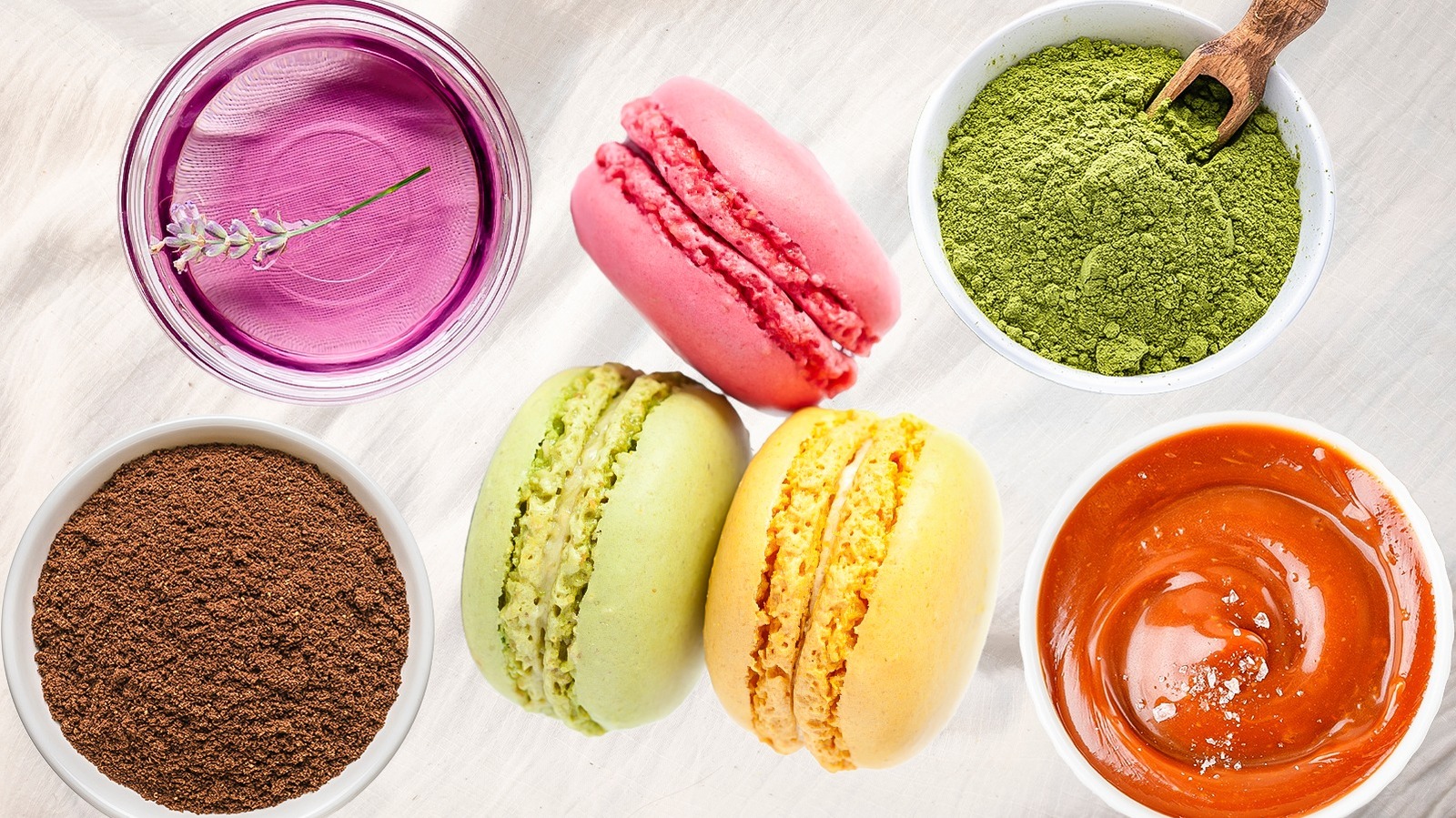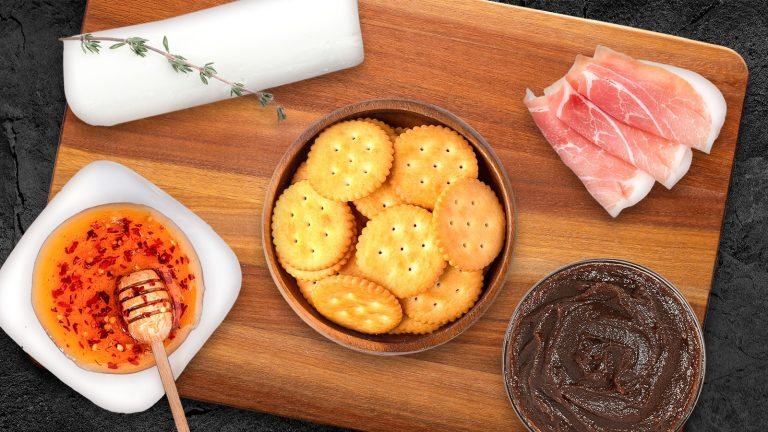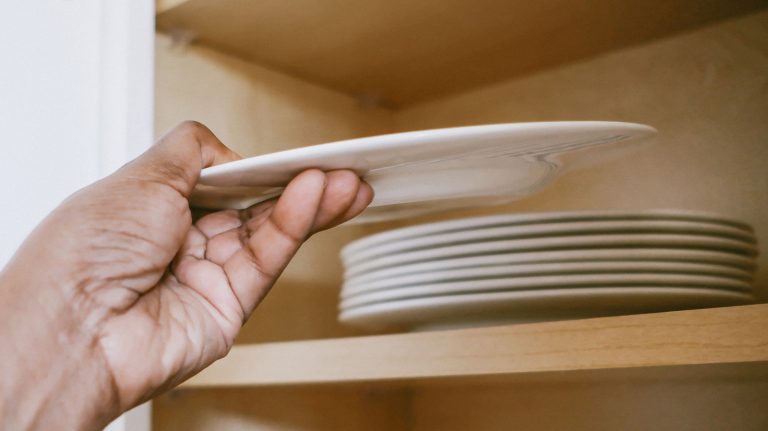We may receive a commission on purchases made from links.
For those of us who love the more delicate things in life, macarons are the epitome of an elegant sweet treat. When made well, these dainty little treats are perfectly smooth and crisp on the outside, with a pleasantly chewy texture on the inside. Anyone who has tried to make them before will know just how volatile and tricky they are to make. There are several common mistakes when making macarons that can ruin your recipe. Anything from humid weather to improperly mixing the batter can leave you with flat or dry macarons. Luckily, there’s no shortage of tips for baking the best macarons that will help you get everything right.
As a trained recipe developer living in France, I’ve had my fair share of amazing macarons and have even done specialized training in how to make them. Once you’ve achieved the basics, you can really have fun with different flavors and textures. There are so many ways to refine your homemade macarons and take them to the next level, or give them new and exciting twists. You can easily make ones that are just as good — if not better — than some of your favorite French confectionery stores and patisseries. Here are some ingredients you should consider adding to give your macarons more pizzazz.
Matcha
Matcha isn’t just a trendy café menu item; it’s an incredibly versatile ingredient that you can use to make all kinds of drinks and baked goods. You can even use it in your daily cooking. While it’s nothing new in many Asian countries, matcha tea and matcha-infused foods are rapidly becoming more popular in other countries. It certainly adds a level of sophistication to all kinds of baked goods, including macarons.
Not only does matcha give your macarons a lovely, earthy flavor, but it has a vibrant green hue that will color your macarons beautifully. Perhaps the best part of using matcha in your macaron baking is that it’s a dry ingredient and is already in powder form. Incorporating it into your recipe couldn’t be easier. Plus, you don’t need a lot of matcha to make an impact.
While most matcha is ground finely enough to not need any more processing, it can be clumpy, so make sure to sift it first. You can sift some through along with your almond flour and sugar, and even add it to your ganache or whatever filling you’ll be making.
Earl Grey tea
Earl Grey is not as unique of a macaron flavor as it may seem. The iconic Ladurée, for example, carries a black tea-based Marie-Antoinette flavor in its shop. This blue macaron has the subtle yet unmistakable taste of tea, making reminiscent of a sweet treat you may have with an English high tea or afternoon tea. It works so well because the slight bitterness of the tea rounds out the sweetness of the meringue and creamy filling beautifully, creating a perfect balance. You can use any type of tea to achieve this elegant macaron at home, but in my opinion, using Earl Grey will take it to new heights.
Earl Grey has all the aromatic intensity of regular black tea, but the bergamot inclusion introduces a hint of fruity citrus, making it even more complex. This play between bitterness and fruitiness is a magnificent marriage in a macaron. The easiest way to incorporate the tea into your macaron is in the filling. You can steep some tea leaves or tea bags in your cream or milk and use that to make a buttercream filling. However, if you’d like to really get the Earl Grey flavor into the macaron, you can add it to the shell, too. You’ll need to grind up your tea leaves in a food processor as fine as possible so that it doesn’t make your macaron batter coarse. Once it’s powdery, mix it into your dry ingredients and proceed as normal. In my experience of doing so, it produces a beautiful “speckled” macaron with a lovely Earl Grey flavor.
Rose water
Florals have always been complementary ingredients for delicate sweet treats, but they’ve historically been used for decoration rather than flavor. This is a shame, as a light floral aroma can be delicious when used with restraint. Floral flavors, including rose water, are very familiar to me, as I grew up with Middle Eastern heritage. Rose water is used to lightly perfume all kinds of Middle Eastern desserts and drinks, so it’s a natural choice for me to include in my homemade macarons. I add a splash of rose water into my ganache or buttercream filling. If you add too much, it can taste soapy, so always start with just a few drops and taste before adding more.
You can also use rose syrup or rose extract for a similar effect. However, I do prefer to use rose water, as it has a much more natural rose flavor. You can then reinforce the flavor and spruce up their appearance by sprinkling dried rose petals on the baked macarons. It’s also possible to add a tiny bit of rose water to the macaron shell batter, but I wouldn’t advise it if you’re a beginner macaron maker, as introducing liquid to the batter can alter how it bakes and may require longer resting times.
Toasted marshmallow
Macaron purists might be put off by the thought of adding toasted marshmallows to macarons, as it’s quite out of the ordinary. However, if you’re more into playful twists and not sticking to the rulebook, adding a little toasted marshmallow to your macarons is an easy way to upgrade them. You can make your shells as you usually would and use some marshmallow as your filling. A blowtorch will allow you to melt the marshmallow enough so that it glues the shells together while also offering a pleasant toasted flavor and look.
The best part about using toasted marshmallows as your filling is that you can use any flavor of macaron shell. Chocolate is an obvious choice if you want to create a s’mores effect, while vanilla, rose, and raspberry would also be delightful. Or, add a little toasted marshmallow to the top of your macaron shells for some extra flair. While this means you won’t see the smooth surface, it does offer a way to hide less-than-perfect shells or those that didn’t bake quite as you expected. So, if you’ve got a few wonky shells, don’t discard them; top them with some toasted marshmallow instead.
Pistachio cream
Pistachio cream seems to be having a moment right now, especially with all the buzz around Dubai chocolate. Thankfully, more stores are starting to stock this magical ingredient. It’s sweet, nutty, decadent, and so versatile. While I like to eat it with a spoon out of the jar, it’s also the easiest macaron filling you can think of. It’s already creamy, so you can pipe it straight onto your macaron shell. Alternatively, you can also loosen it up with some heavy cream if it’s too thick to pipe.
If you can’t find pistachio cream anywhere, it’s possible to make your own at home. Get some shelled pistachios and pulse them in your food processor until a paste forms. This might take a while, but have a little patience, as the mixture will turn from chunks of pistachio to a flour-like consistency, and then eventually will cream up and turn into a chunky, peanut butter-like texture. I like to add some powdered sugar and coconut oil and pulse until smooth. For some added flavor, roast your pistachios first to bring out their warm nuttiness even more.
Salted caramel
Mixing salty with sweet is not a new concept by any means, but that doesn’t make it any less desirable. For example, there’s little as satisfying as salted caramel. It’s luscious and rich, but instead of tasting sickly sweet like regular caramel, the salt helps it achieve a perfect flavor balance. It’s something you will want to reach back for time and time again, as the feeling in your mouth is simply moreish. This makes it a really wonderful ingredient to upgrade your macarons with. Macarons tend to be on the sweeter side of things, so a little salted caramel can be a welcome addition.
You can often find great store-bought salted caramel, or you can make your own with this easy salted caramel sauce recipe. Fill your macarons with it as is, or mix it into your buttercream if you want to dilute it a little. For an extra hit of salt and some drama, sprinkle some flaky sea salt on top of your macarons, and voilà.
Lavender extract
Before moving to France, I hadn’t really considered lavender to be an edible ingredient. However, after a stint in the South of France among the endless lavender fields, I discovered lavender honey, lavender tea, and, best of all, lavender macarons. These flowers are delicately perfumed and have an exquisite but light flavor. Lavender macarons sound super impressive and high-end, but in reality, they are really simple to make. You can use lavender extract to add some lovely floral flavor to your ganache or buttercream filling.
You can also add a little into your meringue mixture, as you only need a little to get a lot of flavor. In fact, less is more, as you don’t want your macarons to taste like soap. Alternatively, you can also infuse dried lavender flowers into milk or cream. Use that to make your buttercream, and then sprinkle some of the lavender petals on top of your finished macarons to make them look extra charming.
Vanilla bean paste
If you’re an avid baker, you probably already know that not all vanilla is created equal. There’s quite a big jump in flavor between vanilla extract and vanilla bean paste. The paste is usually made with pod scrapings, which is why it has a more intense and “natural” flavor. If you’re making vanilla macarons, then I highly recommend using the paste. It will highlight the creamy flavor really well, and you’ll have lovely little black specks in your macarons too, showing off the real ingredient used in them.
Vanilla bean paste is also a better ingredient to use in your macaron shells than the extract because it’s less liquidy and is less likely to make your batter too wet. You can also use the paste in your filling as well to double up on the vanilla flavor. It may cost a little extra to use the paste, but if you love its flavor, you’ll see it’s worth every penny.
Espresso powder
If you love coffee, you probably have an affinity for coffee-flavored treats. There are so many things the flavor works well with, whether it’s cake, ice cream, mousse, or macarons. It’s a really suitable flavor for macarons because the bitterness of the coffee counteracts the sweetness and gives the macarons a deep, toasty flavor. But simply adding coffee to your cream isn’t enough. That’s why I recommend using espresso powder, which you can add it straight into the macaron shells.
The reason you should use finely ground espresso powder rather than grounds, or instant coffee powder, is that espresso powder is going to dissolve into your batter much more easily. It also has a much punchier flavor than the instant stuff, in my experience, and allows the coffee to really shine through in the bake. It also won’t produce a gritty texture when you bite into it the way coffee grounds would. You can add the powder straight to your buttercream, without the need to dissolve it in water first. It will easily blend into your cream without watering it down.
Chestnut cream
Chestnut cream isn’t as popular in the U.S. as it is in France, but it should be. This caramel-like, sweet paste tastes strongly of ground chestnuts. It’s rich and nutty, but subtle enough not to overpower a dessert. People use it as a spread on bread and crepes, in baked goods, or mix it into yogurt. When I want to make my homemade macarons extra special, I use it as a creamy filling. It gives the macarons a luscious chestnut flavor that pairs well with the taste of the meringue and almond flour. Try some with a cup of coffee, and you’ll be in heaven.
You can use chestnut puree to achieve a similar effect, but the cream is much more concentrated. If you’re unsure where to get your hands on some, try this Crème de Marrons de l’Ardèche chestnut spread. It’s the most popular chestnut cream found in French supermarkets. You can use it as is, or make a chestnut ganache or buttercream with it by adding a couple of tablespoons to your mixture.
Peppermint candies
This may seem a bit out there, but peppermint candies can be a nifty upgrade for your macarons, especially during the holidays. In this case, the candies work more as a garnish, but still add a unique seasonal flair. I like to coarsely crush them so there is some powder and larger chunks of candy. Then, I press them against the sides of my macarons to form a crunchy coating. It looks beautiful and adds a Christmas-y flavor, too.
You can use peppermint candies to dress up any flavor of macaron that works well with peppermint, including chocolate and vanilla. You can also make peppermint macarons by adding some peppermint extract into your macaron batter. I find that the flavor goes nicely with a classic cream cheese frosting as a filling and a crunchy coating of crushed peppermint candies.
Black sesame seeds
Black sesame seeds are one of the most exciting ingredients to work into your baking and confectioneries, and they’re a natural pairing for a nutty cookie like a macaron. I prefer to use black sesame seeds instead of the white ones because they offer the earthy, sesame flavor but with a beautiful, contrasting black color. Adding them to the batter to create a speckled look or garnishing the treats creates a dramatic effect.
Black sesame seeds can be finely ground in your food processor and incorporated into the meringue batter. You can also let the seeds blend even longer to make your own black sesame seed paste. This paste will be the perfect thing to mix into your buttercream filling. Alternatively, you can be extra bold with your sesame flavor and use the paste itself as your macaron filling. You’ll need to blend in some powdered sugar to make it sweet, and perhaps a little coconut oil to make it nice and glossy. If you love the taste of sesame, you’ll likely want to spread some on toast or even eat it by the spoonful. But don’t eat all of it — you have to save some to pipe into your macarons! You can also coat the sides of your macarons with whole sesame seeds to make them look even more striking.





